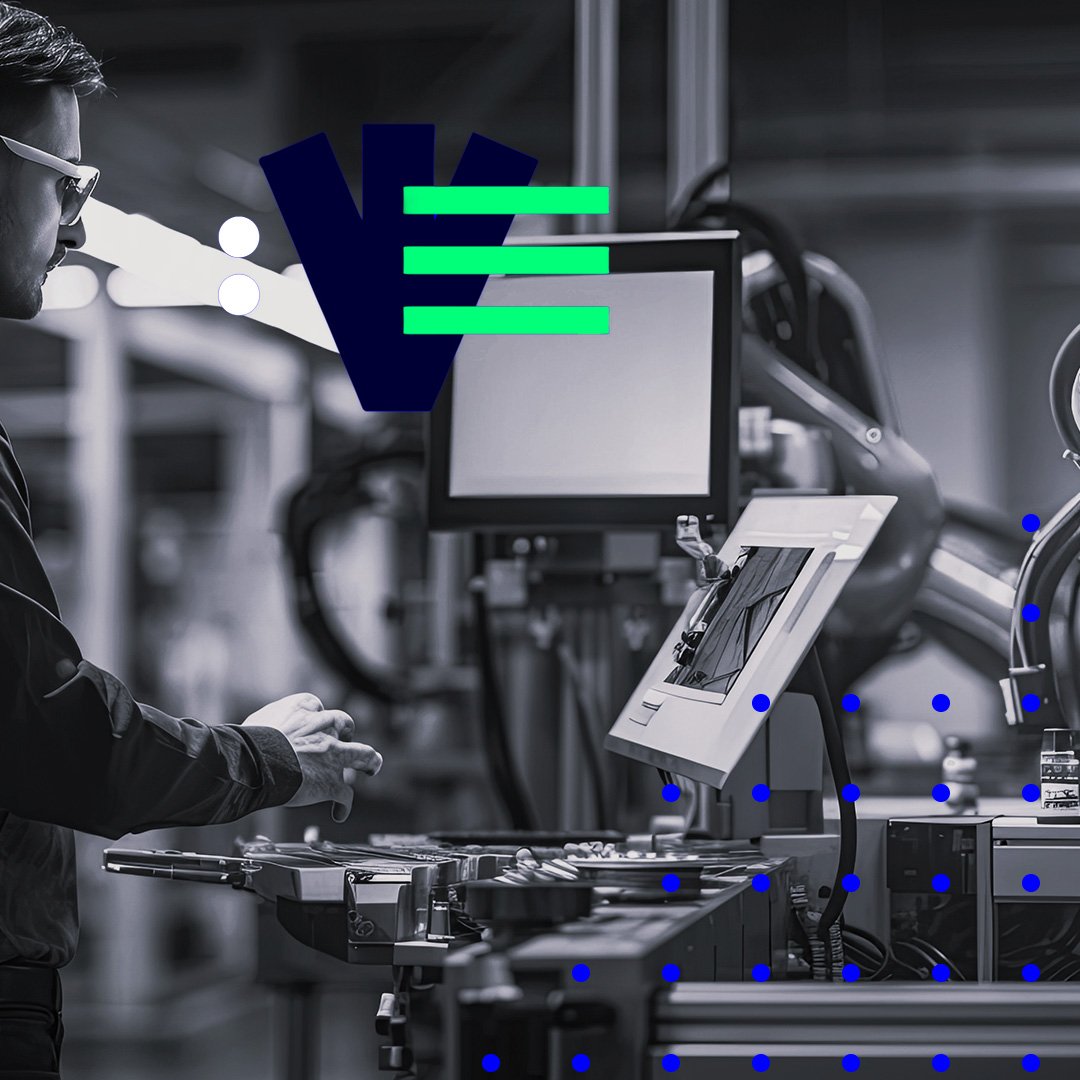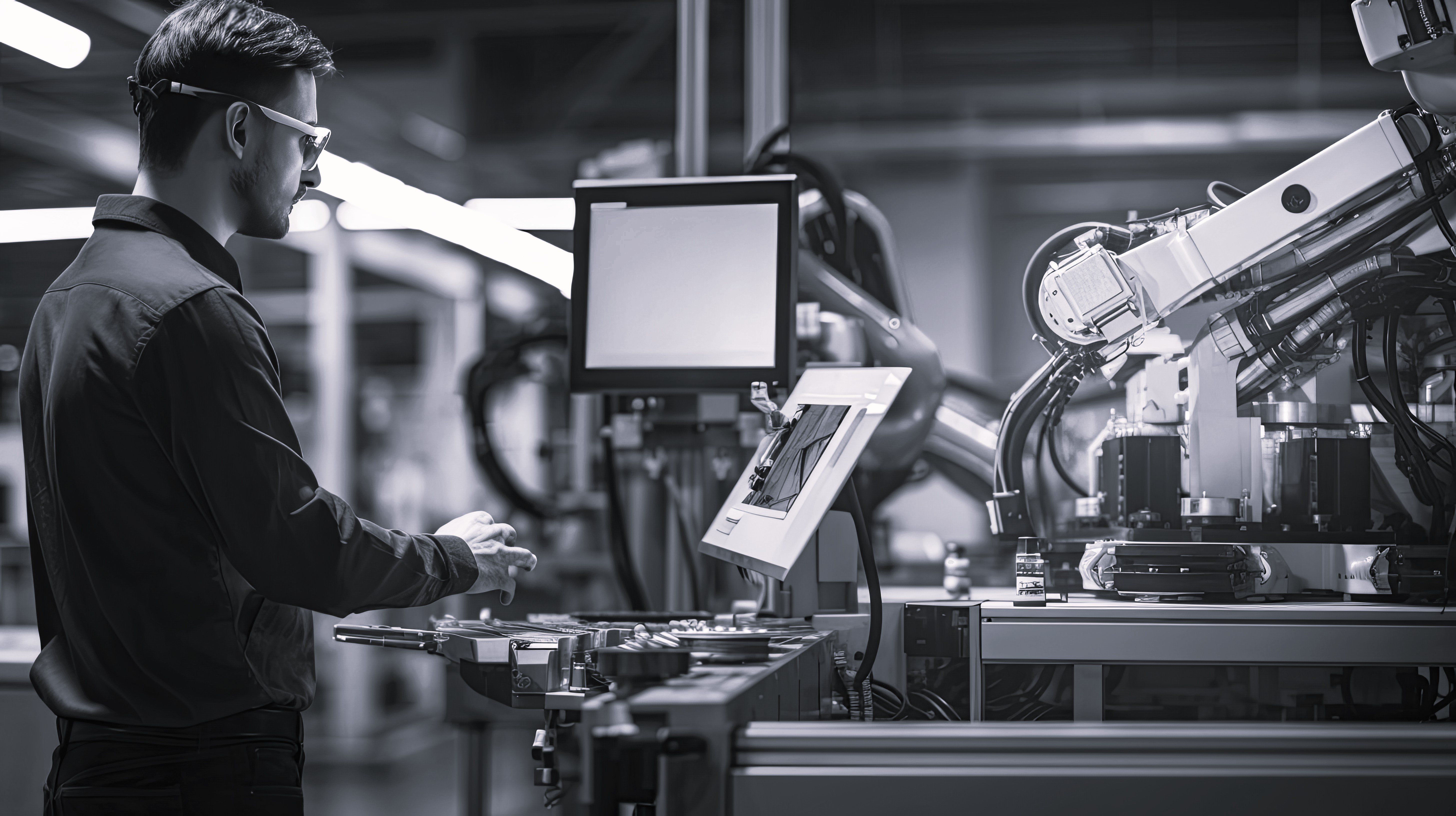How IT service providers optimally leverage current wireless trends
The future of connectivity An analysis of the significance of 5G, Wi-Fi 6E, Wi-Fi 7, IoT, and AI for IT service providers in Switzerland
11 min read
 Géraldine Wymann
:
Apr 12, 2024 10:19:30 PM
Géraldine Wymann
:
Apr 12, 2024 10:19:30 PM

Table of Contents
The manufacturing and construction sectors are currently undergoing a transformative phase, characterized by the integration of IoT devices, the implementation of Artificial Intelligence (AI), and the widespread adoption of robotics. These advancements are revolutionizing traditional practices by streamlining processes, optimizing resource allocation, and facilitating early identification of bottlenecks. AI-driven systems are enhancing planning accuracy, refining quality control measures, and fine-tuning process efficiency. Concurrently, robotics solutions are driving automation across various tasks, thereby bolstering productivity levels. These forward-looking trends are poised to deliver heightened levels of efficiency, safety, and sustainability across the manufacturing and construction landscape.
In this blog, we aim to delve into the latest technological trends shaping the manufacturing and construction industries through insightful discussions with industry experts.

Through interconnected devices and sensors, construction sites can be more efficiently monitored. Real-time data transmission and analysis enable precise monitoring of construction projects, optimal resource utilization, and early identification of bottlenecks. Wireless networking allows the connection of machinery, labor force, and materials into an intelligent network, significantly enhancing the overall performance of construction projects. It also enables preventive maintenance of facilities and buildings, minimizing downtime and reducing costs in the long term. The seamless integration of IoT solutions offers the construction industry the opportunity to enhance efficiency, increase safety standards, and promote sustainability. IoT technologies, sensors, smart devices, robots, and drones have already made their way into construction firms and are partially integrated into daily construction routines. In the coming years, the focus will be on maximizing their potential by connecting everything together.
For example, Komatsu, as a manufacturer of construction machinery, has utilized AI and the Internet of Things (IoT) to connect its construction equipment and gain data-driven insights. By integrating sensors into the construction machinery, Komatsu can capture vital data such as operating hours, fuel consumption, and maintenance needs. These data are then analyzed to perform predictive maintenance, optimize fuel consumption, and enhance the overall efficiency of the construction machinery.
The networking of factories and machinery enables the optimization of the production process and the enhancement of efficiency. Real-time data transmission and analysis enable precise monitoring of machine performance and accurate analysis of production data. The integration of IoT into the manufacturing industry also enables the implementation of Smart Manufacturing concepts. By connecting machines and equipment, communication and collaboration between different process steps improve. This allows for the early detection and resolution of bottlenecks and production disruptions. The analysis of collected data enables companies to avoid supply chain bottlenecks, increase productivity, and improve product quality. Wireless networking also allows for preventive maintenance of machinery, resulting in significant cost savings. The interaction of all digital processes in construction is summarized under the term "Construction 4.0," inspired by the industry.
The networking of devices and real-time data transmission enable companies to detect potential hazardous situations early and take measures to avoid risks. This contributes to the safety of labor forces and minimizes the risk of accidents or machine damage. Furthermore, the integration of IoT and wireless networking contributes to improving sustainability. The construction and manufacturing industries are already employing some technologies, such as apps and software, to optimize workflow and facilitate information exchange.
"The efforts towards digitization of manufacturing processes and products are supported and promoted at Ammann through various organizational measures. Several years ago, digitization committees were integrated into the organizational structure across divisions.
In Ammann's machinery products, supportive systems and solutions are offered that, for example, simplify machine (fleet) management but can also collect usage data. This allows us to derive planning-supportive information for our customers and optimize the utilization and uninterrupted operation of the machines (Predictive Maintenance).
In the area of Ammann plants, maintenance and usage data are also centrally collected and made available to the operator/customer via IoT. An operator of multiple plants can thus, for example, make comparisons of productivity or energy requirements and implement optimizing measures together with Ammann."
Markus Fischer, Head of Datacenter & Network
at Ammann Schweiz AG
"Is your network ready for industry and construction at the edge? Go beyond simple connectivity with an insightful, autonomous, and secure network. IT networks (OT & IT) have become an essential part of the modern industrial landscape. Companies that invest in modern, robust, and scalable network infrastructures can benefit from a variety of advantages, including efficiency gains, improved collaboration, enhanced competitiveness, and seamless integration of IoT devices."
Beat Sommerhalder, Country Manager Switzerland at HPE Aruba Networking
"A reliable Wi-Fi network forms the backbone for seamless communication and real-time data transfer between IoT devices. But it's not just about providing fast connections. The IT infrastructure must also be capable of supporting large numbers of devices, delivering high bandwidth, and processing data in real-time. Additionally, security mechanisms must be implemented to ensure the confidentiality and integrity of the data. A well-thought-out IT infrastructure is the key to fully realizing the potential of intelligent networking of IoT devices in the manufacturing and construction industries."
Christoph Eggler, Solutions Architect - Secure Data Access at BNC
The integration of Artificial Intelligence (AI) and machine learning into wireless technologies offers diverse potentials for enhancing efficiency and quality in the manufacturing and construction industries. Through the analysis and evaluation of complex data streams from wireless networks, precise recommendations can be derived to optimize production processes and minimize downtime. Machine learning enables the continuous improvement of wireless sensor networks for monitoring machinery, buildings, and infrastructure to a new level.
Using AI and machine learning, manufacturers can predict when machines or equipment may fail. Based on real-time data and historical information, preventive maintenance can be performed to minimize downtime and extend the lifespan of machines.
AI can be utilized to detect and identify errors in production. With the help of machine learning, algorithms can learn to distinguish faulty products from flawless ones, thereby identifying quality issues early on.
The integration of AI allows for the optimization of production processes and the identification of inefficient workflows. Through the analysis of production data, AI-driven systems can make improvement suggestions, thus reducing costs and increasing efficiency.
AI's application in BIM systems facilitates design optimization, construction error detection, and building energy consumption optimization. Machine learning enables continuous enhancements to BIM models, adapting them to evolving requirements. In Switzerland, the Digital Switzerland Action Plan mandates the adoption of Building Information Modeling (BIM) for public sector projects starting from 2025. This mandates compliance with BIM requirements throughout the planning, implementation, and operational phases of public construction projects.
VR and AR are employed in the construction industry for various purposes. During planning and design, VR enables architects and engineers to provide clients or teams with a better understanding of buildings, spaces, or construction sites. By immersing themselves in virtual reality, errors or problem areas can be identified early on, facilitating prompt corrections.
Moreover, AR aids in on-site construction processes. Through AR glasses, workers gain access to digital information such as construction plans or checklists, displayed directly in their field of vision. This real-time access to information enhances efficiency and accuracy.
Beyond planning and execution, VR is increasingly utilized for virtual tours and visits, allowing clients and investors worldwide to experience future projects immersively.
For example, construction company Mortenson has already integrated VR and AR into its construction projects. By leveraging VR and AR technologies, Mortenson provides immersive and interactive experiences to visualize design and planning better, improving communication among project stakeholders. This facilitates faster decision-making, enhanced collaboration, and more efficient project execution.
AI integration enables real-time monitoring of construction sites and the early identification of potential safety risks. By analyzing sensor data and employing image recognition algorithms, deviations from safety standards can be detected promptly, allowing for appropriate interventions.
"The manufacturing processes are continuously optimized. For example, manufacturing logistics are completely digitally supported. This requires a comprehensive campus Wi-Fi infrastructure that can provide various devices in the logistics process with the necessary connectivity."
Markus Fischer, Head of Datacenter & Network
at Ammann Schweiz AG
"The digitization of manufacturing, whether in a factory or on a construction site, offers many advantages in terms of planning, monitoring, and maintaining processes and equipment. From this information, much can be learned about improvement potentials, thus increasing efficiency. However, at the same time, there are also new challenges, such as ensuring the security of additional IT components and their communication paths or conducting data evaluation in compliance with data protection regulations. Planning these aspects of information security early helps to accurately assess efficiency improvements and correctly estimate overall costs (savings)."
Martin Buck, CISO & Head of Consulting Services at BNC
Collaborative robots, often referred to as cobots, are becoming increasingly prevalent. These robots can operate safely alongside human workers and are employed for various tasks in both manufacturing and construction settings.
In manufacturing, cobots are utilized to automate repetitive tasks such as loading and unloading components in machines. For instance, in the automotive industry, they work alongside human workers to aid in assembling vehicle parts.
According to a study by Grand View Research, the market for collaborative robots is expected to experience a compound annual growth rate of over 40% from 2021 to 2028. This highlights the significant growth potential and widespread adoption of collaborative robots across different industries, including manufacturing and construction.
Mobile robots, encompassing autonomous vehicles and robotic arms, are increasingly being deployed in manufacturing and construction for tasks such as material transport, machine operation, and inspections. These robots offer flexibility and efficiency in dynamic environments, leading to enhanced productivity.
A report by "MarketsandMarkets" forecasts that the mobile robot market in the construction sector will witness an annual growth rate of over 16% from 2021 to 2026. The rising demand for automation, efficiency improvement, and cost reduction is driving the integration of mobile robots in construction activities.
Adaptive automation technologies are employed in manufacturing to adjust production processes to changing demands. For example, flexible robotic arms can automatically adapt to different components and assembly tasks.
This fosters flexibility and adaptability in manufacturing and construction, allowing technology to accommodate diverse products, construction site conditions, and operational requirements.
The integration of robotics and AI technologies enables robots to operate autonomously and learn from their environment. AI empowers robots to make context-aware decisions and adapt their tasks to varying situations. This facilitates intelligent, efficient, and self-governing manufacturing and construction processes.
"Adaptive and collaborative robotics can provide a crucial competitive advantage. Therefore, it is important to protect this intellectual property and to include access control, network security, and data sovereignty in automation projects from the outset. This way, you maintain your competitive edge and avoid being hindered by hackers or overtaken by industrial espionage."
Martin Buck, CISO & Head of Consulting Services at BNC

The manufacturing and construction sectors are increasingly adopting cutting-edge technologies such as IoT, AI, and robotics to enhance their competitiveness and navigate the digital transformation successfully. By intelligently connecting devices, leveraging AI algorithms, and implementing robotic automation, businesses can boost efficiency, cut costs, and elevate the quality of their products and projects. These technologies facilitate more precise planning, streamlined execution, and improved collaboration among diverse stakeholders. The manufacturing and construction industries are witnessing dynamic developments that hold the potential to revolutionize the sector and establish new benchmarks for efficiency and innovation.
To effectively harness these trends, an IT infrastructure within construction or manufacturing companies must meet specific criteria. This includes scalability, reliability, and resilience, robust data security and privacy measures, seamless integration of different systems, utilization of cloud and edge computing, proficiency in data analysis and AI capabilities, as well as user-friendly interfaces and comprehensive training programs. A meticulously designed IT infrastructure is paramount for driving efficiency, reducing costs, and enhancing quality across production and construction operations.
Wi-Fi 6E and Wi-Fi 7 offer a range of benefits for the manufacturing and construction industry. By expanding the frequency spectrum to 6 GHz, Wi-Fi 6E provides greater bandwidth and less interference, resulting in higher data rates and better network performance. Wi-Fi 6E and Wi-Fi 7 also support larger numbers of devices, allowing companies to seamlessly integrate a variety of IoT devices, connected machinery, and sensors. Additionally, Wi-Fi 6E and Wi-Fi 7 are expected to provide improved energy-saving features and more efficient use of the frequency spectrum, which reduces energy consumption, particularly in large facilities or construction sites, and extends the battery life of IoT devices.
Smart Manufacturing refers to the integration of advanced information technology (IT) and automation technology into the manufacturing industry. It involves the use of technologies such as the Internet of Things (IoT), big data analytics, artificial intelligence (AI), machine learning, augmented reality (AR), and robotics to optimize production processes and improve efficiency, quality, flexibility, and sustainability in the manufact
Smart Manufacturing offers your company various advantages. By utilizing cutting-edge technologies such as the Internet of Things (IoT), big data analytics, and artificial intelligence (AI), you can optimize your production processes and achieve efficiency gains. This leads to improved cost control, increased productivity, and higher product quality. Additionally, Smart Manufacturing enables more efficient use of resources, faster time-to-market for products, and better adaptability to changing market conditions.
The implementation of Smart Manufacturing requires careful planning and execution. Start by analyzing your production processes and facilities to identify areas where automation and efficiency improvements are possible. Consider deploying IoT sensors to collect real-time data and invest in big data analytics capabilities to gain valuable insights from the collected data. Integration of AI and machine learning can help you identify patterns and trends, optimizing the production process. Additionally, explore the opportunities of robotics to automate tasks and improve accuracy. Close collaboration with various departments and training of employees are also crucial to successfully implement Smart Manufacturing in your company.
Building Information Modeling (BIM) is the digital, interconnected management of a construction project, where all data of a building is captured, linked, and managed within a 3D model. BIM promotes collaboration and connectivity among all stakeholders involved in construction, allowing them to access the collected data at any time and make informed decisions. BIM encompasses both the technology, the BIM model as a digital twin of a building, and the method, where people, technologies, and processes come together in a digital space. The BIM model consists of many discipline-specific models merged into a coordination model, depicting dependencies between different objects. BIM supports the planning and construction process by visualizing changes and impacts in real-time and providing information on both geometric and alphanumeric data. Through BIM, all construction stakeholders can work together in a centralized location, thus improving the efficiency, quality, and sustainability of construction projects.
Building Information Modeling (BIM) enables a transparent construction process as all information is accessible to all project stakeholders. This fosters collaboration and trust among the parties involved. BIM also aids in accurately estimating construction costs and adhering to budgets, as decisions are based on well-founded data and simulations. By optimizing workflows and avoiding duplication of work, time wastage and delays are minimized. The model also allows for early detection and prevention of potential clashes and errors. BIM promotes collaboration and mutual understanding among project stakeholders and enables visual inspection of the current planning. Data is stored in a central location and can be more easily evaluated and analyzed, leading to better decision-making and optimizations. Overall, BIM offers a plethora of benefits including transparency, cost certainty, time savings, error prevention, improved collaboration, enhanced visualization, and better data availability.

The future of connectivity An analysis of the significance of 5G, Wi-Fi 6E, Wi-Fi 7, IoT, and AI for IT service providers in Switzerland

The Impact of Wireless Technologies on the Transportation and Logistics Industry Optimizing Efficiency, Cost, and Communication through IoT, AI,...

How public administrations and educational institutions can benefit from these technologies The transformative role of IoT, AI, and Big Data in the...